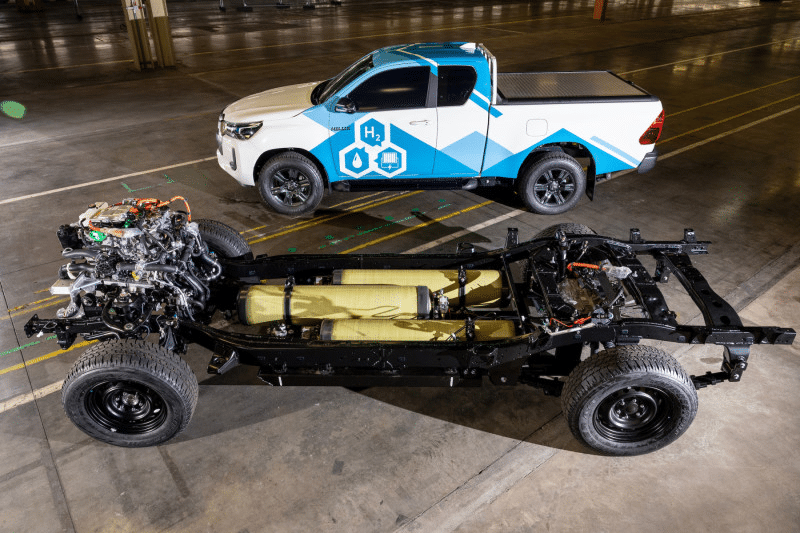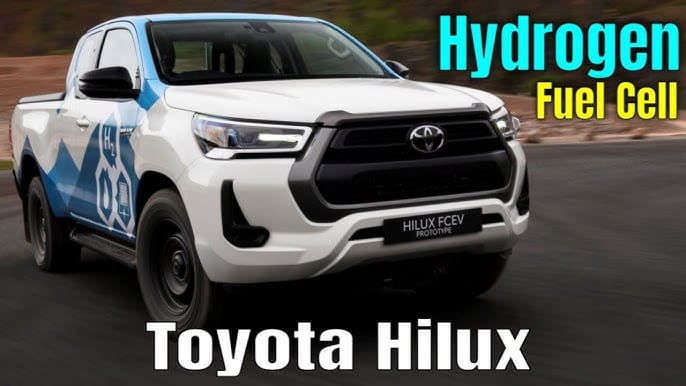Toyota has unveiled its latest innovation, the hydrogen fuel cell electric Hilux prototype, marking a critical step toward carbon neutrality. The vehicle, developed in collaboration with partners and supported by the UK government, is part of Toyota’s multi-path strategy to achieve zero emissions using various powertrain solutions—hydrogen fuel cells being a critical one.
The prototype revealed at Toyota Manufacturing UK’s Burnaston plant integrates technology from the Toyota Mirai hydrogen fuel cell sedan. With hydrogen stored in three high-pressure tanks, it boasts a range of over 600 km, offering more distance than typical battery-electric vehicles. The hybrid battery, placed in the rear deck, preserves cabin space while storing energy generated by the fuel cell.
Collaboration and Development
This project, initiated in early 2022, involves critical partners such as Ricardo, ETL, D2H Advanced Technologies, and Thatcham Research. With the prototype built by June 2023, Toyota aims to produce ten units by year’s end, all undergoing rigorous testing for safety and performance. The outcome will shape decisions on mass production by mid-decade.
Hydrogen’s Role in Toyota’s Future
Toyota is committed to developing hydrogen solutions beyond mobility, envisioning hydrogen’s role in heavy-duty transport and industrial sectors. The Toyota Mirai sedan and the prototype hydrogen Hilux represent critical milestones in this pursuit. Toyota also sees hydrogen as a building block in Europe’s shift toward sustainable energy, aligned with the region’s ambitious 2030 carbon-neutral targets.

Next Steps
As Toyota continues to explore hydrogen’s potential, mainly through hydrogen combustion engine technology, the Hilux prototype will undergo further testing. Toyota’s ongoing innovations reflect its belief in offering diverse solutions—hybrid, battery-electric, and hydrogen fuel cell technologies—to meet the world’s varying environmental needs.
This development positions Toyota as a leader in alternative fuel technologies, particularly in Europe, where hydrogen infrastructure investments are accelerating.


